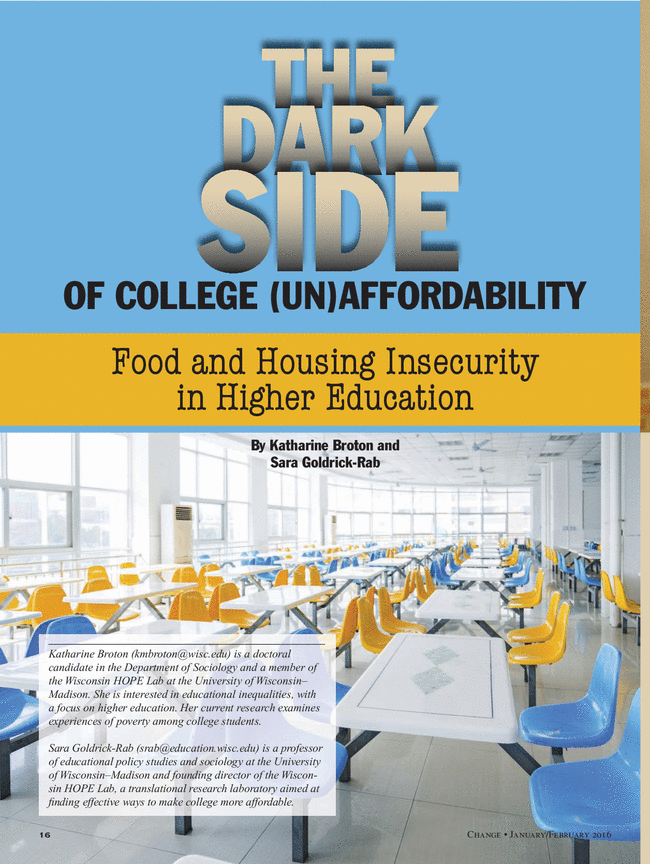Going without: An exploration of food and housing insecurity among undergraduates (2018)
The rising price of higher education and its implications for equity and accessibility have been extensively documented, but the material conditions of students’ lives are often overlooked. Data from more than 30,000 two- and 4-year college students indicate that approximately half are food insecure, and recent estimates suggest that at least 20% of 2-year college students have very low levels of food security. At least one-third of 2-year students are housing insecure, including up to 14% who are homeless, whereas between 11% and 19% of 4-year students are housing insecure. Most of these students work and receive financial aid, but only a fraction receive public or private assistance to help make ends meet. Implications for research on college affordability and efforts to boost college graduation rates are discussed.


